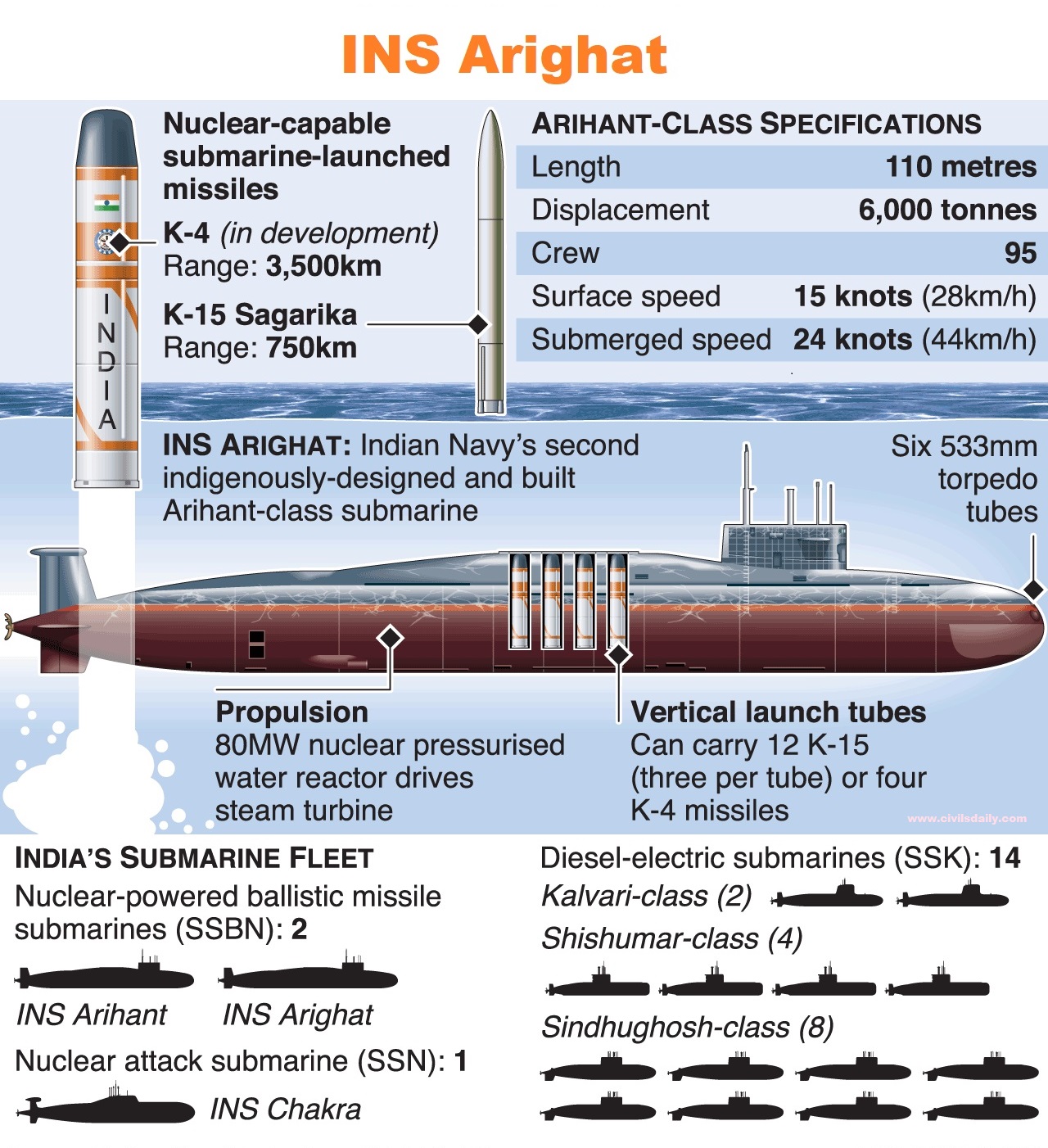Note4Students
From UPSC perspective, the following things are important :
Prelims level: About INS Arighaat;
Why in the News?
India’s second nuclear submarine, the Arighaat, was officially commissioned into the Indian Navy in Visakhapatnam, following rigorous trials conducted over the past few months.

Status of Navy’s Submarines in India:
|
About the newly inducted INS Arighaat
- INS Arighaat is a 6,000-tonne Arihant-class ballistic missile submarine, which will join its predecessor, INS Arihant, as a vital component of India’s nuclear triad.
- The submarine can carry up to 12 K-15 SLBMs with a range of approximately 750 km or four K-4 SLBMs exceeding 3,500 km.
- It is powered by an 83 MW pressurized light-water nuclear reactor, allowing it to remain submerged for extended periods without surfacing compared to the diesel-electric submarine.
- It will enhance India’s nuclear deterrence, support strategic balance in the region, and play a crucial role in national security.
How does it significantly strengthen India’s nuclear triad?
- Enhances Second-Strike Capability: With two nuclear submarines now operational, India can maintain a constant presence of a submarine patrolling its waters, ready to launch a nuclear strike at short notice in retaliation.
- Expands Missile Reach: INS Arighaat is equipped with indigenously developed K-15 missiles with a range of over 700 km and long-lasting availability underwater due to a nuclear-powered engine without surfacing.
- From the South China Sea, these submarines can potentially target locations in China, including its capital Beijing.
- Both of this major developments will provide India with a more balanced and robust nuclear deterrent capability across all three domains – land, air, and sea.
Way forward:
- Indigenous Submarine Development: Accelerate the development and commissioning of indigenous SSBNs (Submersible Ship Ballistic Missile Nuclear) and advanced SLBMs (Submarine-Launched Ballistic Missiles) to further strengthen India’s strategic autonomy and ensure sustained deterrence capabilities.
- Strategic Partnerships and Modernization: Enhance collaboration with global naval powers for technology transfers and expertise while modernizing the current submarine fleet to ensure continued operational readiness and address emerging maritime security challenges.
Mains PYQ:
Q What are the maritime security challenges in India? Discuss the organisational, technical and procedural initiatives taken to improve maritime security. (UPSC IAS/2022)
Get an IAS/IPS ranker as your 1: 1 personal mentor for UPSC 2024

